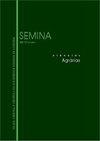Echocardiography and 3D printing: cardiac models for the education of dog owners
IF 0.5
4区 农林科学
Q4 AGRICULTURE, MULTIDISCIPLINARY
引用次数: 0
Abstract
Three-dimensional (3D) printing is a new method for creating human and veterinary anatomical models, which makes the education of students and professionals in the health area more complete, in addition to helping the patients themselves understand. In the area of cardiology, this technique can efficiently help the assessment of cardiac alterations for the patient during medical consultations, tying a feeling of involvement with the medical team. Likewise, it is possible to use 3D printing to understand the echocardiographic technique, where conceptual knowledge of the anatomy of the heart and the ability to translate a two-dimensional ultrasound image into a 3D idea is required. This research aimed to develop printable 3D cardiac models, to demonstrate cardiac sections used in echocardiography and use them to teach dog owners, evaluating their suitability as a tool for a better understanding of the echocardiographic exam. The 3D cardiac models were validated by dog owners through an evaluation questionnaire prepared on a Likert scale, after monitoring the echocardiographic examination with an explanation by the echocardiographer using the printed models. A total of 30 dog owners participated in the study. In all seven questions of the questionnaire, the vast majority of positive responses were observed, with partial or total agreement by the participants. These results showed that the use of 3D printed models is effective in improving the understanding of the echocardiographic examination and is feasible in the daily workflow.超声心动图和3D打印:用于狗主人教育的心脏模型
三维(3D)打印是一种创建人体和兽医解剖模型的新方法,除了帮助患者自己理解外,它还使卫生领域的学生和专业人员的教育更加完整。在心脏病学,这项技术可以有效地帮助患者在医疗咨询期间评估心脏变化,将参与感与医疗团队联系起来。同样,可以使用3D打印来理解超声心动图技术,其中需要心脏解剖结构的概念知识和将二维超声图像转换为3D想法的能力。这项研究旨在开发可打印的3D心脏模型,展示超声心动图中使用的心脏切片,并用它们来教狗主人,评估它们是否适合作为更好地理解超声心动图检查的工具。狗主人通过Likert量表编制的评估问卷对3D心脏模型进行了验证,监测超声心动图检查,并由超声心动图医生使用打印模型进行解释。共有30名狗主人参与了这项研究。在问卷的所有七个问题中,绝大多数都得到了积极的回答,参与者部分或完全同意。这些结果表明,使用3D打印模型可以有效地提高对超声心动图检查的理解,并且在日常工作流程中是可行的。
本文章由计算机程序翻译,如有差异,请以英文原文为准。
求助全文
约1分钟内获得全文
求助全文
来源期刊

Semina-ciencias Agrarias
农林科学-农业综合
CiteScore
1.10
自引率
0.00%
发文量
148
审稿时长
3-6 weeks
期刊介绍:
The Journal Semina Ciencias Agrarias (Semina: Cien. Agrar.) is a quarterly publication promoting Science and Technology and is associated with the State University of Londrina. It publishes original and review articles, as well as case reports and communications in the field of Agricultural Sciences, Animal Sciences, Food Sciences and Veterinary Medicine.
 求助内容:
求助内容: 应助结果提醒方式:
应助结果提醒方式:


